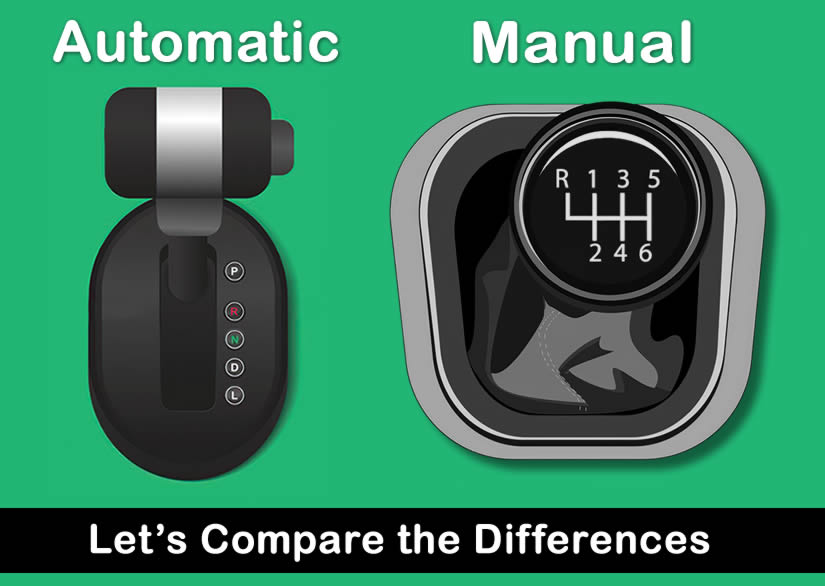Difference Between Automatic and Manual Car
The main difference between an automatic and manual car is the gearbox; an automatic car changes gears for you and with a manual car, you have to change gears yourself.
If you’ve previously driven a manual car and this is your first time driving an automatic, the first biggest difference you’ll notice is the lack of constant gear changing. A relief to some, what with the ability to keep both hands on the steering wheel at all times and no more aching left leg with all the clutch pedal dipping. Stalling is also a thing of the past with automatics, so you’re probably asking why did you ever bother with manual in the first place?
The difference here is really about control and you do get more control in a manual. If you’ve never driven a manual then you’ll obviously have nothing to compare it to, but if being able to select specific gears precisely when you want at any given engine speed is your thing, then you’re not likely to enjoy driving an automatic very much.
Difference in Gear Changing Speed
On a manual car, the speed of gear changes occurs at a rate in which the driver is capable of doing it, whereas for automatics, the speed of gear changes is determined by the technology.
A difference between manual and certain budget automatics is a delay in gear changing and this can affect driveability. Go to pull away at a busy junction, you may notice a delay between pressing the accelerator and from when the car actually starts moving. The delay may only be for a second or so, but it can be quite disconcerting when speed is crucial.
This delay is noticeable on situations such as overtaking. Plant your foot on the gas pedal, an automatic downshifts to produce better acceleration and there’s that delay again – right between the pedal action and need to get moving.
You do learn to live with the quirkiness of cheap automatic cars though and after a short while, you’ll begin to factor in the delay when making driving manoeuvres. More expensive automatic cars are a totally different matter. In fact, some modern automatic gearboxes and clutched are incredibly responsive and are far faster at changing gear than any human.
Cheap automatic cars vary in their responsiveness, so before making a purchase, take it for a good drive to ensure you’re happy with how the car reacts in all conditions.
Should I Choose Manual or Automatic?
There are of course other differences between automatic and manual cars such as purchase price, fuel economy, vehicle availability and car insurance prices, but car technology has come a long way and driving an automatic is no longer seen as an alternative for those that can’t change gear.
If you have an automatic car licence, it means you can also legally drive semi-automatic cars – you know, the ones that have the gear paddle changers at the steering wheel. These are now incredibly popular, good fun to drive and come as standard on many higher end vehicles.
Within the last 10 years, the sales of automatic cars has increased by over 40 percent. Likely due to them being far easier to learn to drive in and with the push of electric cars increasing, the day of the manual transmission is limited.
So really it comes down to driveability and control. If you like the idea of being able to control your car down to the finest detail, then you’re better off going manual. If like many of us, you just want to get where we need to get to with as little fuss as possible, go for automatic.
Driveability can still be an issue on some cheaper models of automatic cars as we’ve said with sluggish gear changes, so if you’re vehicle choice is restricted by budget, be sure to check out as many reviews as possible and test drive before purchase.
